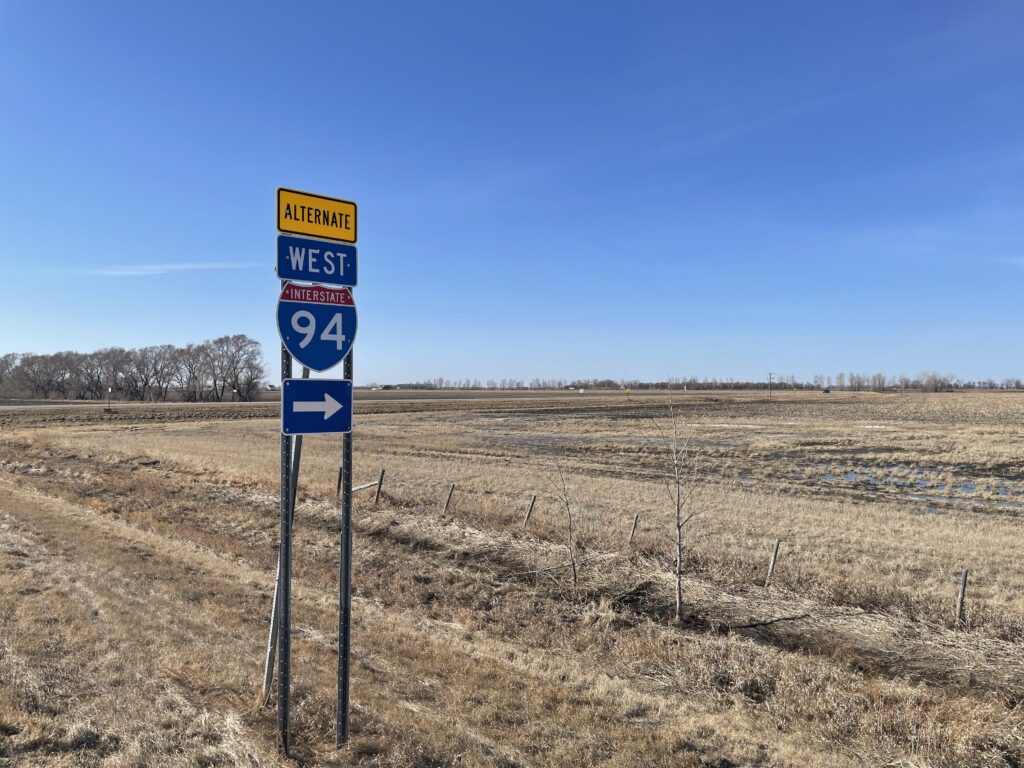clay county histories
Markus Krueger | Program Director HCSCC

William Thompson’s farm in the distance
Imagine yourself waking up at daybreak in Buffalo River State Park – not by the campers or the pool, but in the grass along the trails. Except there are no trails yet, no buildings around, no sound but the birds and bugs, because it’s 1878. The wildflowers and tall prairie grass are everywhere for miles upon miles. In fact, you are not at Buffalo River State Park at all, but 12 miles away in Elkton Township. That’s where Scottish immigrant William Thompson woke up.
“We made our bed on the ground with an old [railroad] tie for a pillow. Morning came and surely the finest day I ever saw. I got up and looked around but not a house nor a tree could I see… I said to myself ‘This is surely the wilds of America but others have made a home in just such a place, and I will here.’”
Between 1880 and 1900, 60% of Clay County’s tallgrass prairie ecosystem was converted into farmland by men like William Thompson. In a single lifetime, almost all of the land was plowed under. Wars and treaties in the 1850-60s caused the human population of this land to go from Indigenous Dakota, Ojibwe and Métis people to mostly European immigrants and New England Yankees. This land had not seen so drastic a change since it emerged from the waters of Lake Agassiz.
The events of this time cause conflicting feelings in me, but we Americans have grown accustomed to complexity in our history. The world is indeed poorer because of the loss of almost all of the tallgrass prairie ecosystem. But the farms that replaced it also give life, and I find them beautiful, too. I’ve read the treaties that allow me to live here, and I am convinced my government acted in bad faith by making promises it intended to break. But I do love living here and I like what our communities have become in the last 150 years.
I went to William Thompson’s farm the other day to take in the view. If you drive east on I-94, look to your right when you see the sign for Downer – Exit 15. That’s the home he carved out of “the wilds of America.” It’s certainly not wild anymore. It’s just east of the corner of 120th Street and 90th Avenue South, a place of well-kept homes, power lines, 21st century agriculture, the interstate highway and the internet, with Downer in the distance. People like William Thompson laid the cornerstone of the modern world we inherited here, the world which we continue to update and remodel.
As an old man, Thompson looked back on the changes he saw since he first woke up here. “That morning I stood within a quarter of a mile of where I stand now. That day not a house to be seen. Today, look around and see the many good homes that meet the eye. It has surely gone beyond my wildest dreams.”

